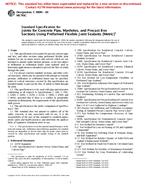1.1 This standard practice describes a method for rapid delineation of volatile organic contaminants (VOC) in the subsurface using a membrane interface probe. Logging with the membrane interface probe is usually performed with direct push equipment.
1.2 This standard practice describes how to obtain a real time vertical log of volatile organic contaminants with depth. The data obtained is indicative of the total volatile organic contaminant concentration in the subsurface at depth.
1.3 Other sensors, such as electrical conductivity, fluorescence detectors, and cone penetration tools may be included to provide additional information. The use of a lithologic logging tool is highly recommended to define hydrostratigraphic conditions, such as migration pathways, and to guide confirmation sampling.
1.4 Limitations – The MIP system does not provide specificity of analytes. This tool is to be used as a total volatile organic contaminant-screening tool. Soil and/or water sampling (Guides D 6001, D 6282, D 6724, and Practice D 6725) must be performed to identify specific analytes and exact concentrations. Only VOCs are detected by the MIP system in the subsurface. Detection limits are subject to the selectivity of the gas phase detector applied and characteristics of the formation being penetrated (for example, clay and organic carbon content).
This practice offers a set of instructions for performing one or more specific operations. This document cannot replace education or experience and should be used in conjunction with professional judgment. Not all aspects of this practice may be applicable in all circumstances. This ASTM standard is not intended to represent or replace the standard of care by which the adequacy of a given professional service must be judged, nor should this document be applied without the consideration of a projects many unique aspects. The word “standard” in the title means that the document has been approved through the ASTM consensus process.
This standard does not purport to address all of the safety concerns, if any, associated with its use. It is the responsibility of the user of this standard to establish appropriate safety and health practices and determine the applicability of regulatory limitations prior to use.
Product Details
- Published:
- 05/15/2007
- Number of Pages:
- 11
- File Size:
- 1 file , 190 KB


